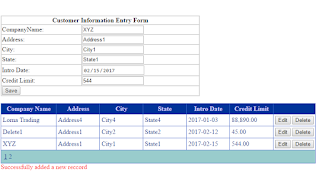Set An Html.RadioButtonFor() Helper As Default Checked In ASP.NET MVC
Good day! Given that you have to set a radio button as default checked in razor view, a code to do that is presented below using conditional ternary operator. However, there is an issue with the code shown below. Even if you set the checked property with empty string, it will still render as checked during run-time. @foreach ( var answer in item.Answers) { <p> @Html.RadioButtonFor(m => answer.ID, true , new { @disabled = "true" , @Name = item.ID, @checked = (answer.IsCorrect) ? "checked" : "" })@answer.AnswerText </p> } To ignore that issue, there are several ways to fix that. First one is to use if statement in the view itself . @foreach ( var answer in item.Answers) { <p> @if (answer.IsCorrectAnswer) { @Html.RadioButtonFor(m => answer.ID, true , new { @disabled = "true" , @Name = item.ID, @checked = "true" })@a



